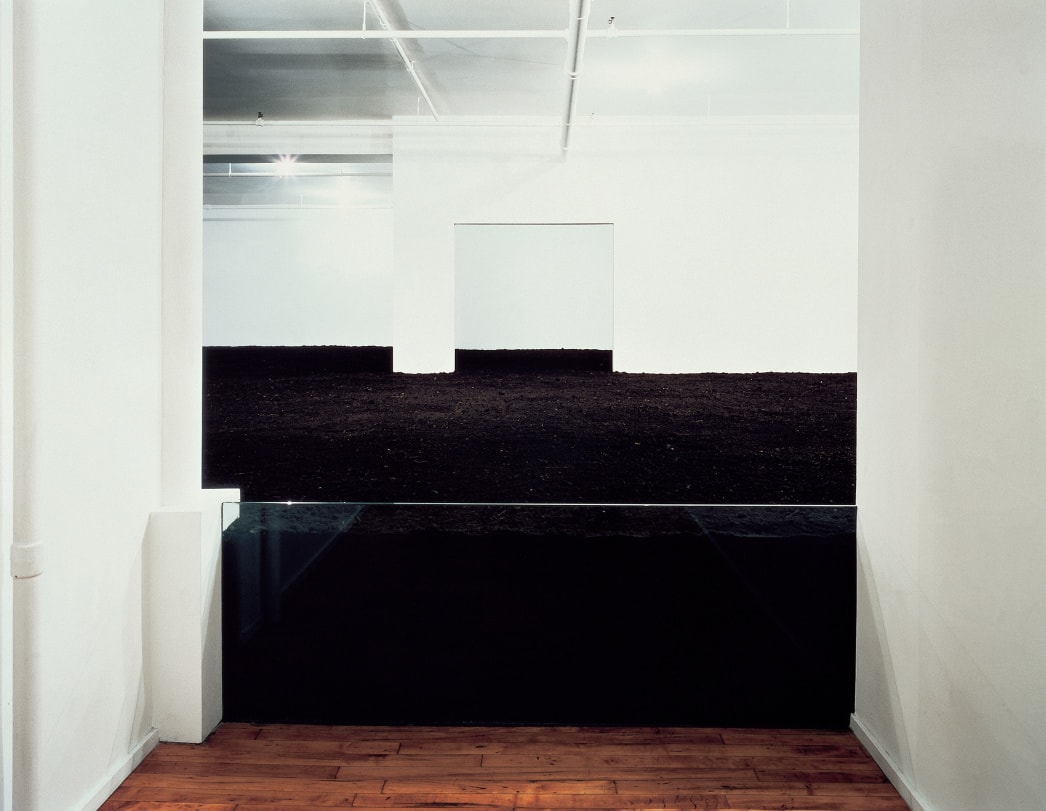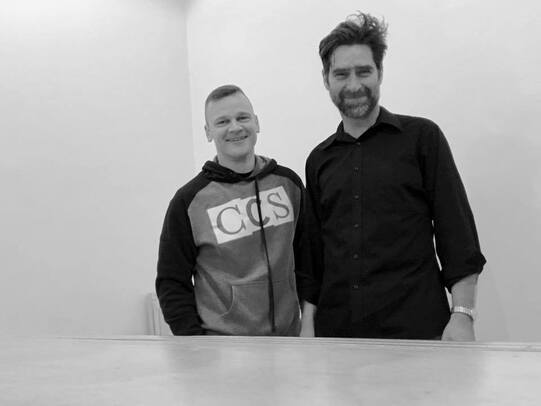|
Where: 141 Wooster Street, New York City
When: 1977 What do you experience? The Earth Room contains 280 thousand pounds of soil (dirt) filling up the 3600 square feet second floor apartment in the heart of New York City. It measures up to about 22 inches in height and is contained partly by the white walls and partly by a glass barrier only inches taller than the level of dirt. Unlike most other types of sculptures, which can be experienced at distance (a photograph can give us an idea of the work and artist’s creativity), the Earth Room should be experienced in person. Besides the visual or even tactile levels of perception, the Room evokes an olfactory experience. The visitor can smell the art. The scent of fresh soil can be felt long before you get to see the actual work, while walking up the stairs leading to the second floor of the building where it is located. The overall impression is similar to that of experiencing the ocean for the first time; one can smell the water long before it becomes available in any other way. In the Earth Room, the scent of the fresh soil intensifies dramatically as we stand in front of the exposition. How does it remain fresh? Bill Dilworth, the curator of the Earth Room, explains the life that has been happening inside the dirt. Originally from Detroit, Dilworth has lived in New York for about 40 years and has been taking care of the New York Earth Room for nearly 30 of those years. While life in the Earth Room dirt is limited by the enclosed space, and it does not have the same kind of substances present in a natural environment, scientists have claimed that some microorganisms can survive in such conditions for up to 200 years. Tests of dirt samples revealed all sorts of life present. One of Dilworth’s routine tasks is to water the dirt, partly to limit the dusting inside the apartment. One of the side effects of that task is the continued sustainability of life present in the sculpture.
Land Art: The Earth Room represents Land Art, a creative phenomenon of the 60s and 70s. Land Art focuses on experiments with free-form, conceptual Post-Minimalism and concern with environment. The work is intentionally simple. Yet, its simplicity is what is so puzzling about it and what provokes the desired outcome: a reflection, a thought, and a pause. There is no specific indication as to where the soil in the Room comes from; it is unimportant as it has carried humanity with equal effort throughout the ages, wherever there was soil.
How significant is it for us to realize and how do we perceive the land? Are we making the best use of the earth? Is that even the proper way to think about it? Artists have been making landscapes the subjects of their works for a long time. Why not consider the material—dirt—to have an independent aesthetic quality or even to be one? Those are some of the notions Land Art evokes. Others include the concern about the human impact on that quality. In that sense, art seems to be ahead of theory, as evidenced by the recent outpour of research on the climate change. Working with non-traditional materials, the value of the process itself, and challenging the commercialization of art were at the core of Post-Minimalist movement out of which Land Art grew. The movement challenged the status of commercial merchandise to which art was reduced. Contrast with city life: A unique feature of the Earth Room is its contrast with city life. The visitor experiences silence and serenity. In the heart of “the city that never sleeps,” the Earth Room’s atmosphere is an oasis of peace and quiet. The earth absorbs while offering a nearly spiritual experience. The feature of solitude is consistent with De Maria’s claim that “Isolation is the essence of land art.” De Maria's other work, The Lightning Field (1977), is in New Mexico’s desolate area near Quemado. Another land artist, Robert Smithson, located his earth sculpture, the Spiral Jetty (1970), in Rozel Point, Utah, on the northeastern shore of the Great Salt Lake, making it inaccessible altogether for an in-person experience. Other Earth Rooms: Originally, there were three Earth Rooms, two in Germany and one in New York, which was the last one installed. They were all initially shown through gallery exhibitions. The New York Earth Room was intended to last three months, but it is now the only Earth Room left. It was taken up by Dia Art Foundation. The foundation has commissioned and/or maintained number of projects, with the goal of helping artists realize their visions, especially those visions which often reach beyond the scope of traditional gallery exhibitions. Who is De Maria? Walter Joseph De Maria was born in 1935 in Albany, CA and died in 2013 in Los Angeles, CA. In 1960, he moved to New York where he stayed the remainder of his career. His artistic interests included Conceptual, Land, and Minimal Art. Among his famous works are the New York Earth Room, The Lighting Field, The Broken Kilometer, and The Vertical Earth Kilometer. Fun fact: Initially, about 3500 people annually visited the Earth Room. Nowadays that number is about 16,000. With the growing awareness of human impact on the environment, it seems likely that the number of visitors will continue to rise. The New York Earth Room remains one of the most unique forms of Land Art.
0 Comments
|
Categories
All
|
- Home
- Blog
-
Museums
- Alte Pinakothek
- Art Institute of Chicago
- Baltimore Museum of Art
- Barber Institute of Fine Arts
- Bargello
- Barnes Foundation
- British Museum
- Church of Sant’Anastasia
- Cleveland Museum of Art
- Courtauld Institute of Art
- Detroit Institute of Arts
- Frans Hals Museum
- Galleria Borghese
- Gallerie dell'Accademia
- Getty Museum
- Guggenheim
- Hermitage Museum
- Kunsthistorisches Museum
- Kunstmuseum Basel
- Legion of Honor Museum
- Louvre
- Mauritshuis
- Metropolitan Museum of Art
- Musee d’Orsay
- Museum of Fine Arts in Boston
- Museum of Modern Art
- National Gallery in London
- National Gallery of Art
- National Museum in Poznań
- Norton Simon Museum
- Ny Carlsberg Glyptotek
- Palace of Versailles
- Palazzo Pitti
- Palazzo Vecchio
- Petit Palais
- Philadelphia Museum of Art
- Prado
- Pushkin Museum
- Ravenna Art Museum
- Rijksmuseum
- San Diego Museum of Art
- Santa Maria delle Grazie
- St. Peter's Basilica
- Städel Museum
- Statens Museum for Kunst
- Tate Britain
- Tate Modern
- Timken Museum of Art
- Uffizi
- Vatican Museums
- Wallace Collection
-
Artists
- Altdorfer
- Anguissola
- Berlin Painter
- Bosch
- Botticelli
- Boucher
- Bronzino
- Bruegel the Elder
- Brunelleschi
- Cabanel
- Caillebotte
- Canova
- Caravaggio
- Carpeaux
- Cezanne
- Cimabue
- David
- Degas
- Delacroix
- De Maria
- Donatello
- El Greco
- Fontana
- Fra Angelico
- Fragonard
- Gauguin
- Gentileschi
- Gericault
- Gonzalez-Torres
- Goya
- Hals
- Hogarth
- Hokusai
- Ingres
- Leonardo da Vinci
- Lippi, Filippo
- Longhi, Barbara
- Lorrain
- Makovsky
- Manet
- Massys
- Matisse
- Merian
- Michelangelo
- Mochi
- Modigliani
- Monet
- Panini
- Parmigianino
- Perugino
- Picasso
- Pisanello
- Raphael
- Rembrandt
- Renoir
- Reynolds
- Rivera
- Rodin
- Rubens
- Scultori
- Seurat
- Steen
- Tintoretto
- Titian
- Toulouse-Lautrec
- Turner
- Uccello
- Van der Weyden
- Van Dyck
- Van Eyck
- Van Gogh
- Van Hemessen
- Vasari
- Velazquez
- Vermeer
- Veronese
- Vigée Le Brun
-
Locations
- Books
- About Us


